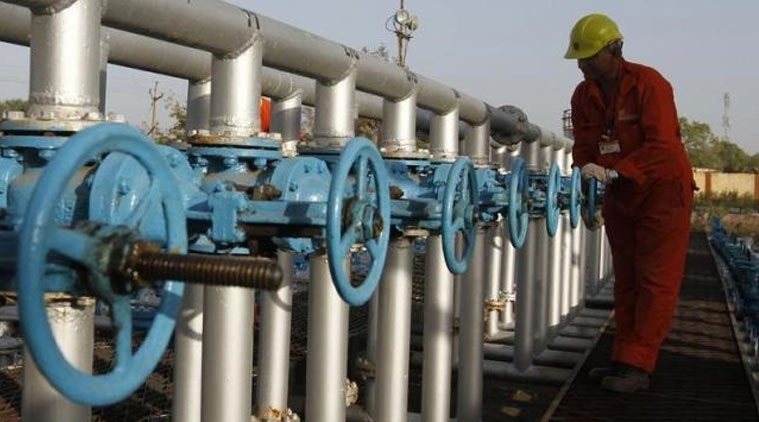- India
- International
A good low
Reduction in natural gas prices is in line with the global trend, affirms move towards market-determined fuel prices.
 On gross calorific value (GCV) basis, the new gas price for October 1 to March 31 would be USD 3.82 per mmBtu as compared to USD 4.66 currently, officials said. (Source: Reuters photo)
On gross calorific value (GCV) basis, the new gas price for October 1 to March 31 would be USD 3.82 per mmBtu as compared to USD 4.66 currently, officials said. (Source: Reuters photo)
The government’s decision to reduce the domestic natural gas price to $3.82 per million metric British thermal unit (mmBtu) for the period between October 2015 and March 2016 is a welcome indication of India’s move towards a more deregulated fuel price regime. The latest reduction, of 18 per cent over the April prices, is the second time natural gas prices have been revised downwards since a new mechanism was put in place last October. According to the new formula, prices are to be revised every six months based on a weighted average of domestic prices in the US, UK, Canada and Russia. Sectors such as fertiliser and power generation, which receive domestic gas on priority, will benefit from the cheaper input. In fertiliser production, where gas prices account for almost 80 per cent of the cost, the chief beneficiary will be the government itself, thanks to a lower subsidy burden. In power, too, lower prices should lead to cheaper electricity in future. However, even as there are gains on the consumer side, there are growing concerns about the business prospects of oil and gas exploration and production in India.
India imports close to 80 per cent of its oil and gas requirement, which, in turn, accounts for almost a third of India’s overall imports. One of the key reasons for linking domestic natural gas prices to global prices last year was to incentivise investment in exploration and production along the Indian coastline and bring down dependence on imports. However, the timing of such a linkage could not have been worse, at least from the perspective of potential producers. Over the past year, natural gas prices have fallen sharply. For instance, prices at Henry Hub in the US, one of the constituents in India’s new formula, have fallen from $6 per mmBtu in February 2014 to $2.8 per mmBtu in August this year. In part, this is because of reduced demand due to the global economic slowdown, especially in big economies like China and the EU. But equally important has been the discovery and supply of shale gas in the US.
Gas prices could go further south if oil prices continue to sink, since the two are highly correlated. According to a September report by Goldman Sachs, a leading investment bank, crude oil prices could hit the $20 per barrel level in the near future. The only silver lining for producers is that the oil and gas industry goes through cycles. For instance, in early 2008, Goldman Sachs had warned that oil prices could touch $200 by 2010. So, as long as India can promise a market-determined price, producers should not despair.
40 Years Ago
EXPRESS OPINION
More Explained
Apr 16: Latest News
- 01
- 02
- 03
- 04
- 05
































